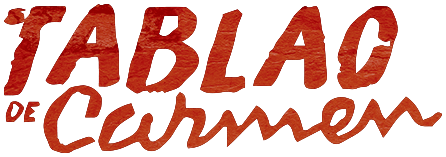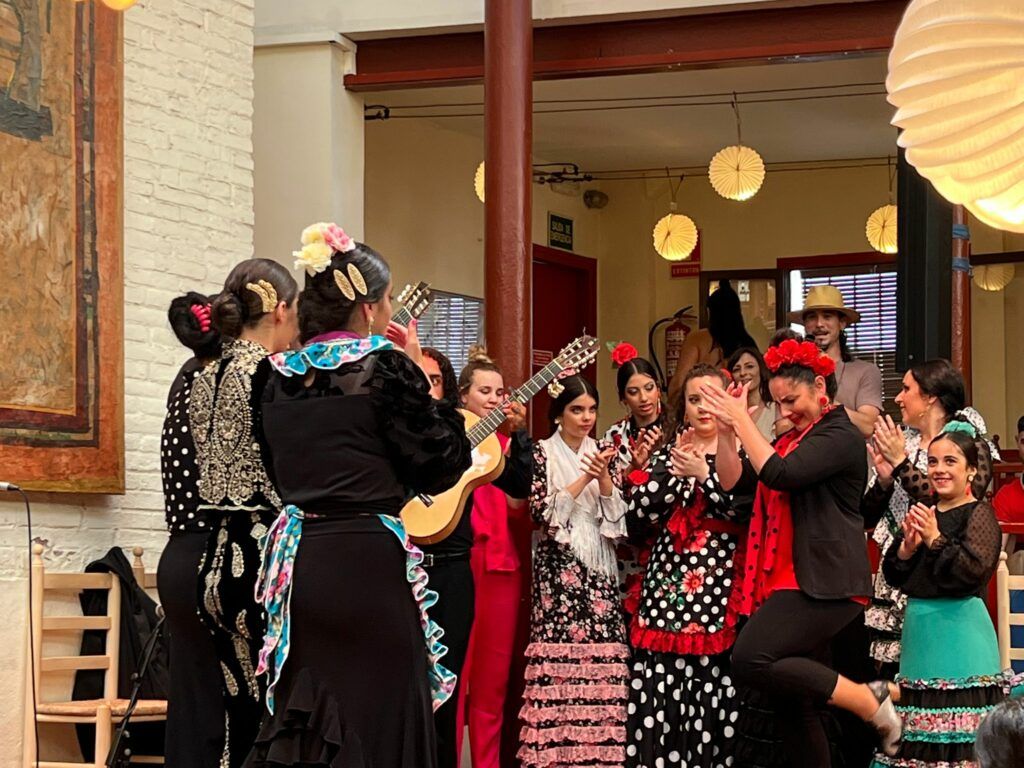Flamenco dancing:The most demanded discipline
Barcelona is a synonym of flamenco and flamenco is a synonym of Barcelona. i.e. Barcelona. The flamenco tablaos, festivals and bars are part of the city and its history, but the flamenco offer in the city also includes the first step for our quarries: the schools. One of the most famous is the one founded by La Tani in 1994. She is a dancer from Barcelona who has acted together with the great flamenco names (Camarón, Lole and Manuel, Manzanita…) and she has carried on her back 25 years as a teacher. Her son, Edu Cortés, a player and one of the teachers and the current head of “La Tanita” school, tells of the illusion the new generations come with: “Youngsters not only want to dance, but to do it well! The little kids are very keen on it, it is important to teach them without biases, to go to the point and be diligent with that”, he says.
Dancing is the king of the schools. It is, among the three big branches of flamenco (dancing, singing and playing) the one that attracts more people and the one the flamenco students want the most. A proof of this are the numbers in “La Tani” school: while there are now 170 students enrolled for dancing, there are 17 for clapping, and 17 for playing (guitar); for cajón 9; and singing, only 4. Each year, according to the School data, there are between 40 and 60 new students enrolled.
Plenty of hard study and constant dedication
What is necessary on the way for students to go from being amateur to becoming professionals? According to Edu Cortés, “it is not only necessary to learn to dance and the steps but also to behave, know the language, the discipline the setting up of the projects (lights, sound, production), study singing and playing and have controlled and real ambitions”. To sum up, hard study and constant dedication. And always be in contact with the world and the environment where jondo art is created: “It is necessary to know many things that can only be acquired living together is a community of real flamenco performers, at La Tani it is available first hand”, he states.
Improvising: the essence of flamenco
José de la Vega is a dancer from Utrera who in 1975, founded a small dancing school in Barcelona. He was so successful that only five years later, he moved to a bigger place in the centre of the city and nowadays his is one of the most famous schools of flamenco dancing. With 100 new students a year, it counts with Toni Moñiz as the director and professor. “The most difficult part for the students is improvisation, without doubts”, he states. “They are used to memorizing choreographies but it is very difficult for them to dance on their own and have to improvise”, an essential aspect for potential contracts in tablaos where all the show involves improvisation.
Self-taught flamenco performers
In the development of the flamenco professionals, there is a big part of self-taught performers. Tailla Carmona, a dancer and singer from Tarragona, who usually performs at the Tablao de Carmen, is one of them: “The little I know is through self-teaching. My father has actually helped me with the structure: the beginning, the performance itself, the ending and the brush”. Before starting her self-teaching, she studied at Artemis Danza dancing school, where she got a scholarship, but it was also the place, according to her, where they learnt sevilles and the “heel-and-toe technique”. I am very thankful to them because they taught me the dancing but after three years, Tato Romero (teacher and dancer)[profesor y bailaor] told me to leave the academy because I was getting behind”, she remembers. “I attend a lesson and I don’t like it because they tell you what you have to do, and I go at my own pace”, says this 19-year-old performer.
A piece of advice from Tailla for those who would like to try self-teaching: listen to flamenco all day long, be constant and pay attention to the referents. “For example, if you like Belén López, who I adore, watch her and learn the nice things without copying but watching what makes her different”, she explains. And according to her experience, it is also worthwhile learning ballet: “It goes very well to know how to position your body, your arms and make the turns”.
“Farruquito was my mirror”
Nevertheless, not all the professionals think the same way about this: “It is like saying that to learn German, it is worthwhile learning English”, says Costi el Chato, the dancer from Barcelona. It helped him but at the same time it caused him some prejudice. “The position of my arm was too tight, as for classical Spanish and I did not allow flamenco to flow”. La Tani was one of the first teachers who taught me how to move my body at a tablao or in a flamenco choreography. Before her, her mother had taught her to dance to rumbas and the tango; and then, she had some highly qualified professors: The Farruco.
“Farruquito has been my mirror”, tells Costi. “There I learnt to dance and sing and play the guitar, to be spontaneous, natural and to be keen on flamenco”. Now he is on the other side: he teaches at the Centro Cultural Gitano in La Mina, where he gives special lessons to perform at the tablao and teaches the flamenco steps but also the dialogue between singers, players, clappers, percusionistspercussionists and dancers. “If you bring them up separately, it doesn’t work, if you bring them up together, they understand and love each other, and things flow more smoothly”.
Compass and tones, the first few lessons
According to his methodology, he explains, there is something very important to transmit before the first kick: the compass. “It is also necessary to know when the guitar is tuned, in which tone the singer is singing, such as the “jaleos”. They start dancing by intuition, copying, by heart…but many times they are not conscious of why they do it”, she says.
At the Tablao de Carmen,many customers ask if there are still children who are born to do this. Costi’s answer is clear: “This is what the gypsies and the people from Andalucia live, we sing all the time, when we are bored, at a communion or if somebody calls and tells you that they have got a job, I sing and dance to them. How aren’t children going to become keen on this and start dancing”.

